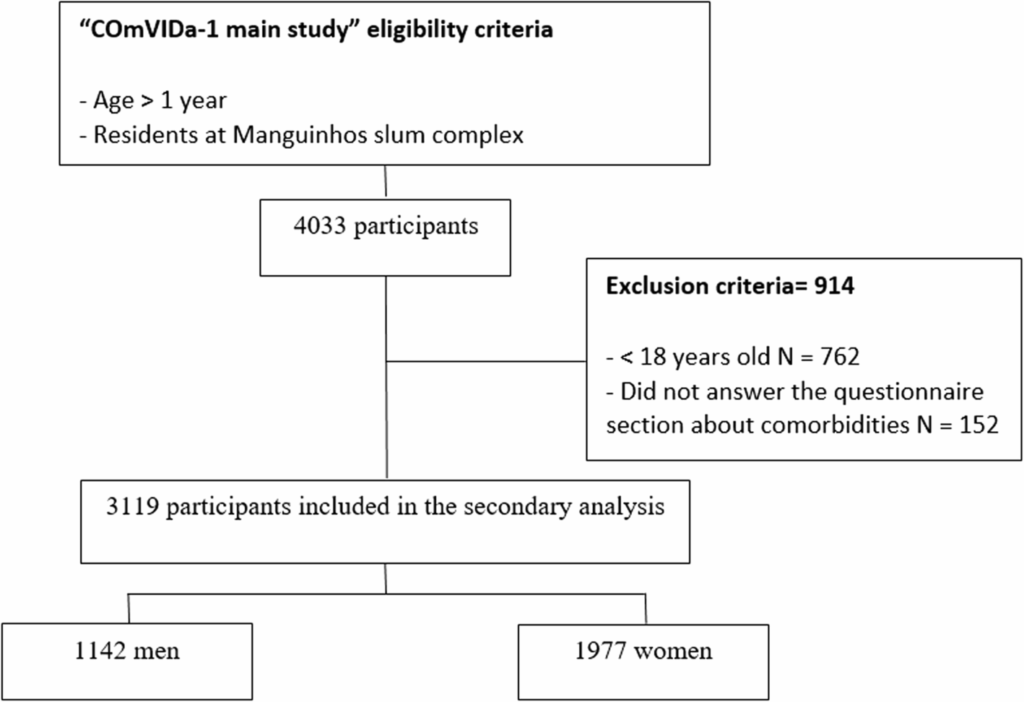
In the densely populated slums of Rio de Janeiro, a new study has shed light on the alarming prevalence of chronic non-communicable diseases (CNCD) and multimorbidity among adults. Conducted in the Manguinhos slum complex, the research highlights the significant health challenges faced by residents in these underprivileged areas.
Multimorbidity, defined as the presence of two or more CNCDs, is becoming increasingly common in low-income urban settings. These diseases, persisting for more than three months and requiring ongoing medical care, significantly impact the quality of life. According to the World Health Organization, CNCDs account for 75% of global mortality, with a disproportionate burden in low- and middle-income countries.
Brazil’s Health Inequality
Brazil, despite its status as a middle-income nation with the 10th largest GDP globally, remains one of the most unequal countries. Women and Black populations bear the brunt of this disparity. National estimates indicate a sharp rise in CNCD prevalence over the past three decades, with conditions like high blood pressure, diabetes, obesity, and depression on the rise.
Recent data from the 2023 Vigitel Survey further underscores this trend, revealing continued increases in these conditions among urban adults. However, the burden of multimorbidity is not evenly distributed. While the general Brazilian population has a 24.2% prevalence rate, this figure soars to 64.6% among the elderly and 41.4% in rural areas.
Life in Rio’s Slums
The rapid urbanization of Brazil between the 1950s and 1980s led to the formation of slums, where 8% of the urban population now resides. These areas are characterized by overcrowding, poor infrastructure, and limited access to essential services. Such conditions create a fertile ground for the proliferation of CNCDs and multimorbidity.
The Manguinhos slum complex, home to nearly 36,000 residents, exemplifies these challenges. It ranks as one of the most impoverished areas in Rio, with inadequate housing and limited healthcare access. The COmVIDa-1 study, conducted here from September 2020 to February 2021, aimed to explore the prevalence of CNCDs and their associated factors among adults.
Key Findings and Implications
The study revealed that 27.5% of the adult population in Manguinhos suffers from multimorbidity. This figure surpasses national averages, highlighting the severe health disparities faced by slum residents. The most prevalent CNCDs were high blood pressure, obesity, and diabetes, with depression also notably common, particularly among women.
By the Numbers: High blood pressure affects 33.9% of slum residents, compared to 23.9% nationally. Diabetes prevalence is 12.7%, significantly higher than the national average of 7.7%.
Age, race, and socioeconomic factors were significant predictors of multimorbidity. Older age groups, Pardo race, and higher family income were associated with increased odds of multimorbidity in men. Among women, Black race, private health insurance, and tobacco use were notable risk factors.
Complex Interplay of Factors
The study highlights the complex interplay of factors contributing to multimorbidity in slums. Economic instability, limited access to nutritious food, and high stress levels due to precarious living conditions all play a role. The findings suggest that the chronic stress associated with poverty and exposure to violence exacerbates the risk of CNCDs.
Interestingly, the study found that living in households with moderate density (1.6–3.0 persons per bedroom) was associated with lower odds of multimorbidity. This counterintuitive finding may point to unmeasured confounding factors, such as access to healthcare and social support networks.
Looking Forward
The implications of this study are profound, highlighting the urgent need for targeted public health interventions in slums. Addressing the social determinants of health, improving access to healthcare, and promoting healthier lifestyles are critical steps in mitigating the burden of CNCDs.
As Brazil continues to grapple with socioeconomic inequality, understanding and addressing the health challenges faced by its most vulnerable populations is crucial. The findings from the Manguinhos study provide valuable insights that can inform policy and drive change, not just in Brazil, but in similar contexts worldwide.







